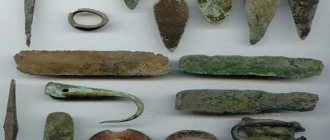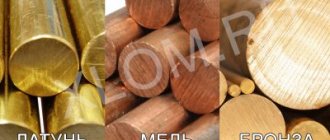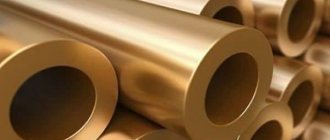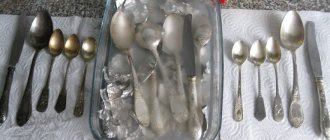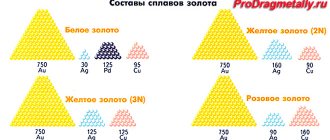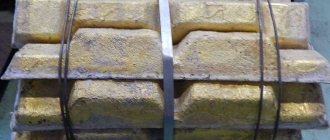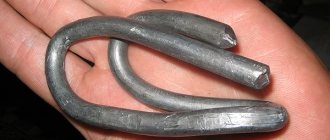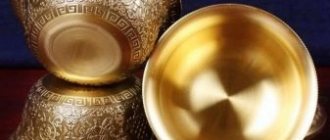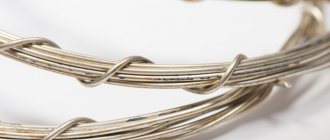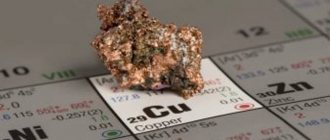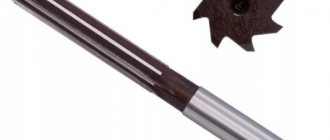» Brown » Bronze color and its combination
Bronze color is one of the most attractive shades of brown. A rich tone with a metallic sheen has not only aesthetic qualities, but also a rich cultural heritage, which includes an entire stage in the formation of humanity - the Bronze Age. Objects of art, jewelry, dishes, tools, weapons determined human well-being, so from time immemorial we have received an understanding of the nobility of this amazing shade, which is associated with labor, wisdom, and education. As a brown tone, bronze color has a natural gift of unity with nature, calmness and regularity. It is endowed with therapeutic properties in conditions of urban stress and sets a noble tone, both in clothing and in the interior.
Complex combination with bronze color
A complex combination can be called a composition consisting of 3 or more shades. For example, bronze combines
- with dove color (2) forming a muted warm-cool contrast, which is very often used to emphasize the warm, bright nature of the main tone. - with coniferous (3) - this is a natural, natural palette that is reminiscent of forest flavor. Soft, unobtrusive and relaxing. It also has a thermal contrast, but not as pronounced as with gray. You can complement the combination with shades of beige, dark blue and dark gray.
Combination of bronze in palettes
Corrosion This chemical process of oxidation creates not only problems, but also amazing textures, like an artist. Smooth and sharp color transitions, a system of channels and protuberances, can intrigue your eye if you are ready to see beauty in all manifestations of nature. The palette consists of milky white, orange-beige, bronze, rust, grey-hyacinth, light silver.
Vintage Bathtub While this shiny bathtub is likely made of copper, it features a deep, vibrant brown that we've identified as bronze. In this case, a pair of blue-green and orange, brown is additional, so it looks very impressive. The color range includes snow white, saffron, bronze, burgundy, sea wave, and medium beige.
Bronze Graptosedum A rare rich brown can also be found in the color of plants, for example, thick-leaved Graptosedum, which has pale yellow-green inflorescences. This composition shows us how beautiful these shades can look side by side. The composition includes pale lime, golden olive, copper, medium bronze, chocolate, blue-black-gray.
Antique Shutters Old wood and the patina on the bronze locks are a stunning piece for vintage art lovers.
Wooden carvings reveal the richness and luxury of brown tones from golden to taupe, thereby giving a fabulous dimension to the work. The palette includes medium beige, tan, bronze, patina, blue-green, gray with green undertones.
Combination of bronze with other colors
Bronze is combined with medium-saturated shades. The best compositions are obtained with an autumn palette. The most luxurious combinations are based on the principle of thermal contrast, however, warm palettes, like the shade itself, have a mysterious appeal. As a brown shade, bronze enhances the color scheme of the couple, and as a complex, deep tone it fills the color scheme with harmony and natural tranquility.
The combination of bronze and pink is soft, romantic, and should not be harsh, even if the shade of pink is dark. Warm, moderately muted shades will look best in combination. The palette is made up of royal pink, cotton candy, strawberry, dark pink, and lingonberry.
Bronze combines with red as a warm, related shade. The color scheme looks natural due to the unifying red tone that is part of brown. Complex, muted red shades can be either warm or have a wine undertone. The combination includes alizarin, tomato, cherry, wine, dark burgundy.
Combination of colors of bronze and orange . In fact, brown, and also so bright, is a dark shade of orange, so the combination with it will be in the same color scheme, the first will be a shadow of the second. The harmony of such a combination will be light, unobtrusive, and the composition will be deep. The color is composed of peach, sea buckthorn, golden copper, dark orange, and red.
How does bronze color combine with yellow? Yellow, like red, is a related shade to brown, as it is part of the latter. Shades of yellow lie in the light spectrum, so this combination will be built on light contrast and will look warm and attractive. The palette was made up of champagne, saffron, mustard, yellow gold, and bright gold.
Bronze and warm green - the combination is pleasant, enveloping, natural, like greenery and thin branches with fresh bark. The shades contain a unifying yellow, which supports harmony. However, it is better to take complex, soft tones of greenery versus bright and ringing ones. The combination includes green tea, chartreuse, protective, pine, brown-green.
Bronze is combined with cool green , creating a slight thermal contrast, but at the same time being in the natural composition zone. Cool shades of green should be light, not intrusive, with a significant admixture of gray, with the exception of emerald, which, like a precious stone, looks good with noble metal. The composition consists of water green, light gray-green, wormwood, gray-green, malachite.
The combination of bronze and blue is not only a representative of rich thermal contrast, but also an additional pair. This coloring is one of the most favorite in all areas. Marine shades are preferred, since bronze is built from a red-orange tone, and blue-green is complementary to it. The color scheme is built from gray-green-blue, thrush egg color, sea green, dark blue-green, blueberry.
Bronze is combined with purple - highlighting its red undertone, since it is what unites these colors. Soft lilac and red-violet shades add spice and sophistication to the main tone. The composition includes lilac-lilac, lilac amethyst, red-violet, plum, eggplant.
Bronze and brown are combinations in the same range, since the main tone is a pronounced brown tint. Such palettes are no less popular than green ones. Their interweaving seems fabulous to us, and the golden notes of some tones, along with dull dark ones, create a feeling of metallic shimmer. The composition is built of oak, tan, sepia, chocolate, dark chocolate.
Bronze goes with white, grey, beige and black as neutral shades.
Each of them emphasizes this color in its own way: soft white brings lightness, beige – meekness, warm gray – smoothes, and cold – sharpens, black richly emphasizes. The palette consists of cream, beige, gray-beige, slate, wet asphalt.
Application area
Bronze alloys, due to the diversity of their properties, find a wide variety of applications.
- The most famous is the material for sculptures and many decorative items: figurines, ashtrays, lamps, grilles, railing decorations and more. Casting bronze allows you to obtain the most complex castings that literally depict the pores of the skin.
- In jewelry, the material is used much less frequently, although it used to be almost the basis of women's jewelry.
- Bronze fittings - overhead hinges, locks, handles, taps, mixers and even plumbing fixtures. The alloy provides not only exceptional durability and corrosion resistance of objects, but also allows you to turn them into an elegant decorative element.
- Many parts are made from cast bronze of different compositions - gears, bushings, seals, parts of equipment designed to work under water.
- Deformable bronzes are used in high-precision technology.
- Other types of alloys are used in areas where the usual tin bronze is not used. For example, beryllium bronze has much higher thermal and electrical conductivity, and therefore is actively used in electrical engineering.
The alloy performs excellently under conditions of variable dynamic loads. Therefore, parts of aircraft navigation instruments, car circuits, etc. are made from beryllium bronze.
- Another well-known application is fittings of various kinds. For more active use in water supply, bronze is too expensive a material, however, the most critical components, as well as numerous fasteners, are made from a copper alloy, since it is extremely resistant to corrosion and inhibits bacterial activity.
Bronze is the oldest and most famous alloy in human history. The diversity of its composition and properties ensures that it is widely used today.
This video will show you how to clean bronze items:
Bronze color in clothes
The bronze color in clothing is modest but elegant. Most of all, it will suit the “autumn” color type, but “summer” girls can also choose it. As a color enhancer, this tone will add amazing color to your wardrobe while remaining natural, noble and stylish. The shade works well in a business casual style, but can also be useful in an evening wardrobe, especially if the fabric is metallic-smooth or velvety-fleecy. The image that this color creates can be called moderately romantic, moderately practical, but always sophisticated and intelligent. It is especially good at creating vintage images without being dull or gloomy.
Combination of bronze in clothes
The combination of bronze color in clothes is not flashy, but rather seasoned and aristocratic. Most often, the shade is supported by several brown and beige tones, this gives a feeling of gloss and shine. Great importance is given to the texture of a product of this shade; any unevenness, hairiness, or volume are welcomed, because, shimmering, this shade acquires the effect of internal light, which refreshes the appearance. Cool shades are always a priority; they make the main tone warmer. Orange, yellow and gold tones continue it. Green, turquoise, purple look exotic next to it.
Bronze classification
According to their chemical composition they are distinguished:
Tin bronzes are alloys with the main alloying component tin. In addition to tin, lead, phosphorus and zinc may be present as additional components. With the addition of tin, copper acquires greater fusibility, elasticity, and hardness. Consequently, the alloy is more amenable to polishing. Additional components improve mechanical, casting, and anti-friction properties.
Tin-free (special) bronzes are alloys that do not contain tin as an alloying element. They are not inferior in properties to tin bronzes, and in some they even surpass them.
According to technological characteristics, bronzes are divided into:
- Deformable – well amenable to mechanical processing: stamping, corrugation, forging. The tin content in them is no more than 6%, which ensures the necessary ductility. Sheets, bronze wire, bronze rod, and bronze tape are made from deformable tin bronzes.
- Foundry - intended for shaped castings. Various parts for machines operating in salt sea water, bearing shells, and gears are made from cast tin bronzes.
Bronze color in the interior
Bronze in the interior looks expensive and elegant. Its closest relative is red terracotta. As a shade close to dark, the tone looks contrasting with white. In such a composition it is worth paying attention to textures. Green accents make a bronze-brown interior feel luxurious. It reveals exotic splendor. Blue enhances the color of bright brown, emphasizing its warm, rich image, but at the same time the combination is more strict than the previous one. There is a lot of this shade in the interior or just the intended accents - it doesn’t matter, the richness of bronze and at the same time its calming effect will allow you to bring pleasure in any quantity.
VIEW COMBINATIONS WITH SIMILAR SHADES (click on color)
Production of material
Bronze is obtained from pure metals or alloys in ingots. The second is more common, as it is cheaper and allows you to get any cast bronze.
- The first stage is the extraction of copper and tin from the deposits. Tin is found in cassiterites, stannines, and so on. Copper is more common: it is mined from native copper and many minerals - chalcopyrite, bornite, chalcocite. The metal is isolated in several different ways, of which pyrometallurgical, that is, oxidative annealing and fire refining, is the most common.
- Then the composition of the charge is calculated: it depends on the composition of the future product and on the production method - from secondary alloys, from metal and secondary alloys, and so on.
- Melting itself, for example from pigs, includes several stages:
- loading - the material is loaded into dried and heated graphite-carboride or graphite-chamotte crucibles. Electric and electric arc furnaces are best suited as they allow melting to be carried out as quickly as possible. This is important because when melting metals, there is a high probability of gases being absorbed into the melt;
- melting - first of all, copper is melted, and then various components are added that improve the mechanical properties of the alloy, and basic alloying additives;
- overheating - the melt is heated to 1200 C under a layer of charcoal. If the source metals are contaminated, liquid salt fluxes are used;
- degassing - the melt is cleaned of gas impurities by blowing with argon or nitrogen.
- Castings are obtained from the finished alloy. Most often, gating systems are used for this. Casting is done in clay or metal molds. It is possible to produce castings using centrifugal casting.
In 2021, there was an increase in prices for copper - up to 4%, and tin - up to 10.3%. Accordingly, the cost of products made from bronze and bronze scrap increases. The latter in October had a cost from 190 to 210 rubles. per kg.
The price of products - rod, casting, sheet - depends on the composition of the alloy. So, a rod of different brands can be purchased for both 308 and 803 rubles. per kg.
Next we touch on the marking and use of bronze.
